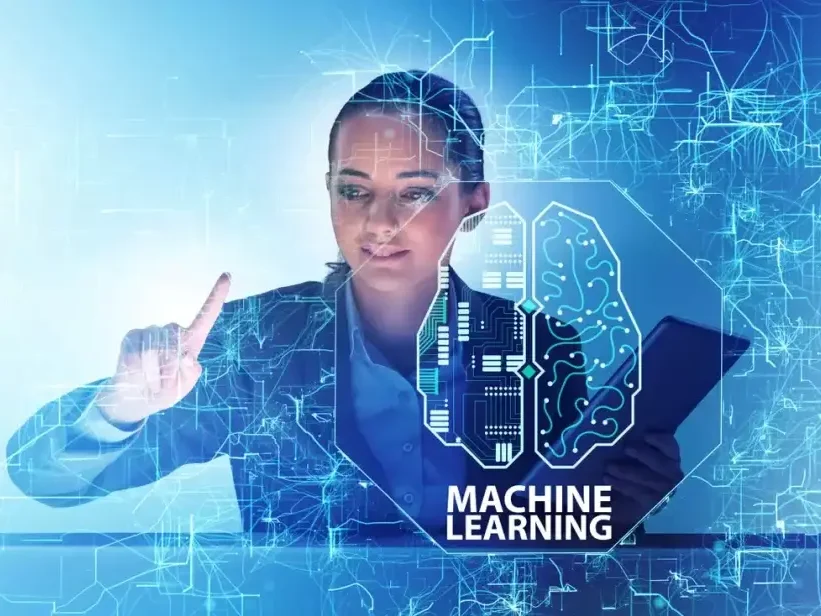Everyone has probably heard about machine learning. But what exactly does the term mean, and what does the process imply? Machine learning is a data analysis method that automates analytical model building. It’s an artificial intelligence branch based on the concept that machines can learn from data and identify patterns.
This article focuses on the importance of machine learning and its methods. The article will answer your questions about machine learning.
Understanding machine learning
So, what is machine learning? It’s a concept according to which a computer program learns and adapts to new data sets without human interactions. Machine learning is considered an artificial intelligence (AI) field that keeps a computer’s built-in algorithms updated regardless of worldwide economic changes.
Here are some critical facts about machine learning:
- Data scientists build a complex algorithm or source code into a computer. The code enables the machine to recognize data and generate forecasts around the data that it recognizes.
- Companies, businesses, or organizations may apply machine learning in many areas. The most common examples include investing, lending, advertising, organizing news, fraud detection, etc.
- Machine learning is helpful in analyzing and processing the massive amount of information already available in the world. That way, businesses may use the results to assist in decision-making.
Now let’s learn how machine learning works.
How does machine learning work?
Typically, scientists break out the learning system of a machine learning algorithm into three crucial parts:
- A decision process. Generally, data scientists utilize machine learning algorithms to make predictions or generate data classifications. Based on the input data (labeled or unlabeled), the algorithm produces an estimate of a pattern within the data set.
- An error function. An error function enables the evaluation of the model prediction. If the machine has recognizable examples, an error function makes a comparison to assess the model’s accuracy.
- A model optimization process. Suppose the model is more fitting to the data points in the training set. In that case, the machine adjusts weights to reduce the discrepancy between the recognizable example sets and the model estimates. The algorithm repeats this evaluation and optimizes the process. It can also update weights automatically until it meets the necessary accuracy.
Companies may use the software in real-life situations upon learning from various examples.
Where is machine learning used?
Typically, companies apply machine learning in different areas for many reasons. For instance, trading is one of the most profitable industries. Machine learning may help with identifying new profitable investment opportunities.
Marketing and e-commerce areas benefit a lot from machine learning. In this case, machine learning provides accurate and personalized recommendations to people based on previous purchases or the internet history.
Even lending organizations can implement this method to predict bad or successful loans that would help them create risk strategies. Banks may also benefit from machine learning in fraud detection. The mechanism may analyze some of the most common fraud schemes so that the bank can prevent them in the future.

Methods of machine learning
Machine learning uses several methods to teach computer software to do various tasks. Check these methods out below.
Supervised learning
The mentioned method has similarities to the real-life experience when the teacher supervises the student. Machine learning requires training the machine by using well-labeled data. It means that some parts of the data are labeled with correct results.
As a result, the supervised learning algorithm analyzes this sample when someone introduces new data into the system. The next step is to predict the right results with the help of the labeled data.
The overall mechanism is categorized into two other algorithms. These are as follows:
- Classification is used when output is in the type of a category. For instance, these categories might be pink or black, true or false, 1 or 2, etc.
- Regression is used when output variables are actual values, for instance, length, age, height, size, etc.
The method allows companies to gather or generate data output based on experience. The principle is similar to human learning based on labeled data during training sets. The technique aids in optimizing the models’ performance when using experience to solve different sophisticated computation tasks.
Unsupervised learning
Contrary to the previous example, unsupervised machine learning algorithms don’t need labeled data. Instead, these algorithms filter through unlabeled data to seek patterns that they can utilize to convert data points into subsequent sets. Some of the most popular types of unsupervised machine learning are deep learning and neural networks.
Typically, the unsupervised learning algorithms are great at completing the following tasks:
- Association mining means recognizing item sets in a general data set that frequently occur together.
- Anomaly detection requires recognizing uncommon data points in a general data set.
- Clustering means splitting the dataset into categories or groups based on similarities.
- Dimensionality reduction requires reducing the variables’ number in a general data set.
In simple words, unsupervised machine learning is all about recognizing hidden structures in unlabeled data sets.
Semi-supervised learning
This type of algorithm is a combination of supervised and unsupervised learning methods. Scientists created the semi-supervising method to overcome the disadvantages of supervised and unsupervised machine learning methods.
The semi-supervised method requires a machine to train according to labeled and unlabeled data. However, the technique requires using a few sets of labeled data and a large part of unlabeled example sets.
The most typical areas where this method is applied include:
- Labeling data. The trained machine can apply data labels to bigger sets.
- Machine translation. Machines can translate from one language to another without having a complete dictionary of words.
- Fraud detection. The machine can identify fraud cases with only a few positive examples. It enables banks to get an edge over scammers using the easiest schemes.
Other real-life applications of the semi-supervised method include web content classification, speech analytics, protein sequence categorization, software engineering, text documents analysis, etc.
Reinforcement learning
This method works by programming an algorithm with a clear goal and a prescribed set of rules necessary to accomplish the goal. Data scientists set the algorithm to look for positive rewards. If the machine performs a beneficial action towards reaching the goal, it receives an award. If the machine performs an action that sets the project back, it gets a punishment.
Data scientists typically utilize the reinforcement learning method in the following areas:
- Resource management. It’s one of the most popular tasks that allows businesses to distribute their finite resources evenly or reasonably.
- Robotics. Artificial intelligence can learn to perform essential tasks in the physical world.
- Video gameplay. Another area where reinforcement learning is often used is the gaming industry. Bots learn how to play the game to be used in a player vs. gaming environment.
The method does not require any labeled data and is referred to as feedback-based machine learning.
The importance of machine learning
Machine learning has been used for a while now, and it’s not a new method. However, new technologies are introduced, so the mechanism keeps evolving. Overall, machine learning is critical for many industries as they better understand trends in customer behavior and operational business patterns. Moreover, the mechanism even aids in new product development.
Many of today’s biggest enterprises, such as Meta (former Facebook), Google, and even Uber, use machine learning as a central part of their strategies. Machine learning has become a crucial tool for many industries and businesses.
Machine learning plays an integral part since it has several practical applications that offer business results. For instance, machine learning saves time and money, so business owners may apply their resources elsewhere with better results.
The main purpose of machine learning is to reduce the burden of completing repetitive tasks. By eliminating redundant tasks from an employee’s work schedule, the company may apply this employee’s knowledge and skills elsewhere, where it’s more important.
